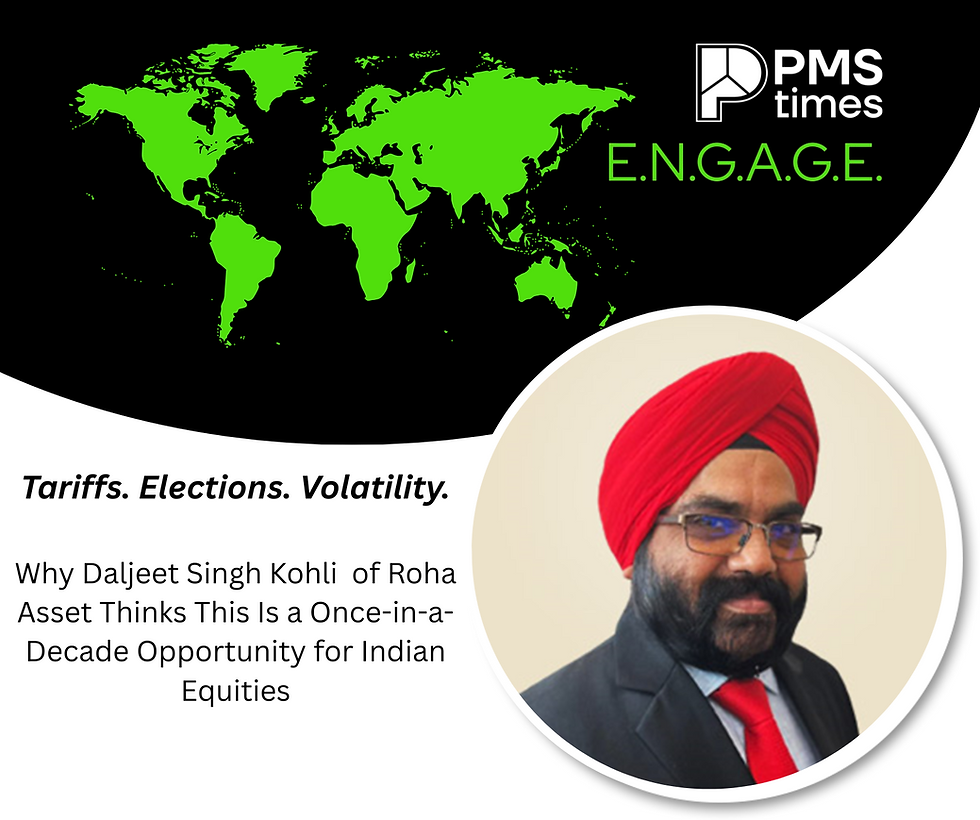Fault Lines 2025: Geopolitics, Tariffs & India’s Next Moves
- Harbir Singh
- Aug 23, 2025
- 3 min read

Geopolitics is no longer a background risk — it is the main script. In our recent PMStimes E.N.G.A.G.E. session, Manu Sharma, Partner at Fair Observer, unpacked the global turmoil triggered by Trump’s disruptive policies, shifting alliances, and rising resource nationalism, and explained what this means for India, its economy, and investors.
A World of “Smash-and-Grab”
Sharma described today’s landscape as a “smash-and-grab” era of geopolitics. Since the 2008 financial crisis and reinforced by the COVID supply chain breakdown, nations have abandoned pure free-market competition. Instead of efficiency and open trade, the new order is defined by control of resources, supply chains, and military-technological leverage.
This means economics is no longer about producing at lower cost — it is about who controls rare earths, oil fields, defense tech, and logistics routes. Market economics has given way to non-market economics: relative strength, resilience, and coercive power.
Trump’s Tariff Diplomacy
At the center of this churn is Donald Trump. His playbook, Sharma explained, has three goals:
Tackle America’s ballooning debt
Create jobs for a hollowed-out Rust Belt
Contain inflation while sustaining political power
The solution? Tariffs and sanctions. By raising the “entry ticket” to America’s economy, Trump extracts revenues from foreign companies while forcing re-industrialization at home. For India, this raises both risk and opportunity. Risks from reduced access to US markets and sanctions pressure. Opportunity from re-alignment toward domestic demand and self-reliance.
Dollar Dominance and BRICS Aspirations
Will the US dollar lose its global dominance? Not anytime soon, argued Sharma. Despite sanctions weaponizing the dollar, no rival currency offers the same liquidity, openness, and trust. China’s yuan and Russia’s ruble remain tightly controlled. Even BRICS’ currency ideas face contradictions — exporters like Brazil and Russia need consumers, while India and China balance services and manufacturing. Without a liberal, consumption-backed anchor, alternatives cannot replace the dollar.
Thus, de-dollarization may find limited traction in trade settlements, but as a store of value, the dollar remains unmatched.
India’s Strategic Crosswinds
India faces a tricky geopolitical map. On one side, Pakistan is leveraging its location, cozying up to both the US and China. On the other, Bangladesh’s alignment with Western powers reduces India’s toehold. As Sharma put it, Pakistan is “monetizing its location,” while India must rely more on sovereign strength and domestic resilience.
Domestically, India’s growth remains robust. Fund managers are already pivoting toward domestic consumption plays, less exposed to external volatility. But policymakers will need agility — balancing diplomacy with economic self-reliance.
Winners, Losers & Safe Havens
For investors, the new order demands sharper filters:
Struggling Sectors: Industries highly dependent on globalized supply chains, where a single disruption can halt production.
Resilient Sectors: Commodities with inelastic demand — oil, gas, rare earths — and industries with greater autonomy of production.
Silver Linings: Precious metals (gold, silver, platinum) which are re-emerging as reliable stores of value amid fears of sanctions and asset confiscation.
Diversification: Real estate and geographic spread, particularly in hubs like the UAE, though entry timing remains critical.
Even oil, though facing long-term renewable substitution, continues to offer trading opportunities given its liquidity and strategic centrality.
Looking Forward
In a world where alliances are transactional and geopolitics drives economics, Sharma offered a sobering yet pragmatic message: India must prepare for resilience, not rely on external anchors. Domestic consumption, strategic autonomy in critical sectors, and portfolio diversification will be the guiding themes.
His closing insight captured the essence: “Faith drives currency, and resilience drives nations. India must lean on both.”
(The Online Session was held on 21st August 2025)



Comments